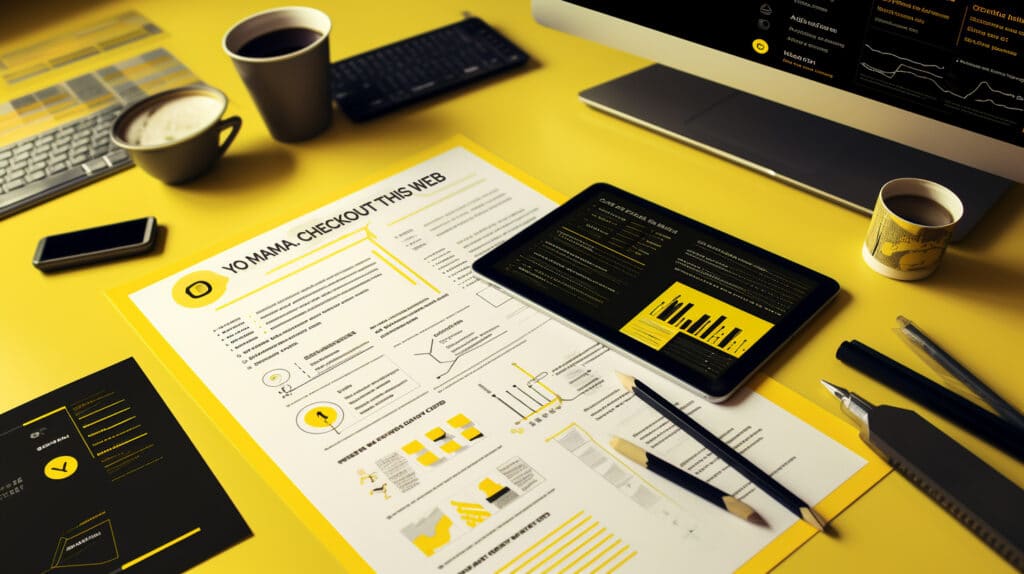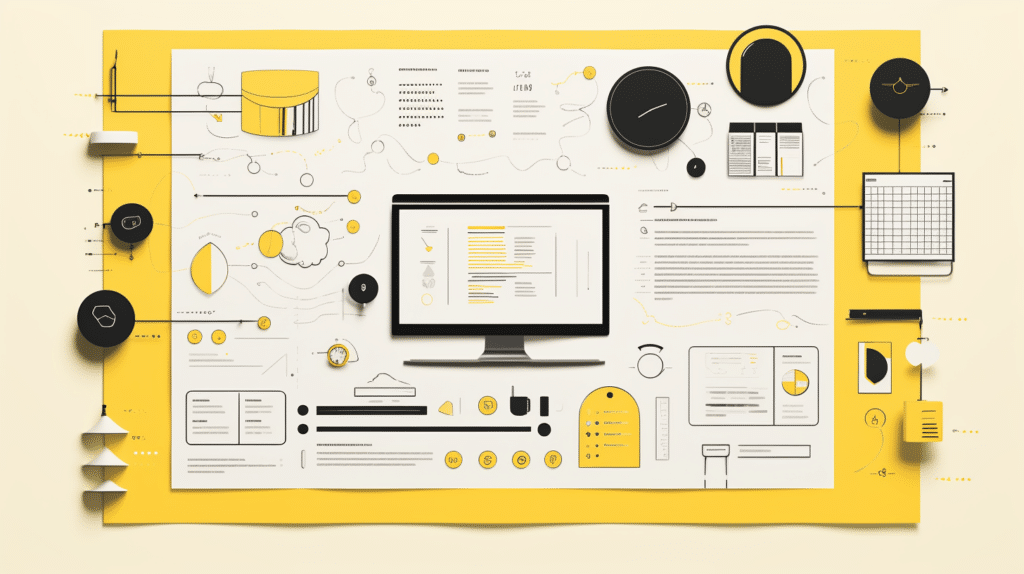

Devstars
A well-crafted website design brief is essential to ensure the successful development of a website that meets your specific needs and objectives. Whether you are working with an in-house design team or outsourcing the project, a good design brief acts as a roadmap, guiding the entire web design process. It helps align all stakeholders and ensures everyone is on the same page regarding the desired outcome.

Before diving into how to write a great website brief, let’s first understand why it is so crucial in the web design process. The design brief serves as a communication tool between you and the web design team, conveying your vision, goals, and expectations for the website. It acts as a foundation for the web designer to work from and helps them create a new website that reflects your brand identity and resonates with your target audience.
The design brief serves as a creative brief for the designers, providing valuable insights into your company, brand, and objectives. It helps them understand your brand personality, values, and unique selling points. By outlining your goals and target audience, the design brief ensures that the website aligns with your overall marketing strategy and effectively communicates your message.
Furthermore, the design brief is crucial in establishing a clear and efficient workflow between you and the web design team. It sets the project’s expectations and guidelines, ensuring everyone is on the same page. This helps minimize misunderstandings and revisions, saving both time and resources.
An effective design brief should include several key elements that deliver a thorough understanding of your web design project. These elements often include:
By including these key elements in your design brief, you provide the web design team with the necessary information to start a process that will meet and exceed your expectations. The design brief acts as a roadmap for the entire web design process, guiding the designers in their decision-making and ensuring a successful outcome.
If this is a website redesign, then doing an in-depth audit of your current website is vital. This evaluation forms a vital part of the brief template, guiding you and the creative team to understand the existing site’s strengths and weaknesses. Here are some key points to consider:
Engaging with these points allows for a comprehensive understanding of the current state of your website. This information is invaluable for your project manager to align project goals precisely with the identified needs. Ultimately, this detailed analysis paves the way for an effective redesign, tailored to address the specific challenges and opportunities presented by your existing website.
Now that we understand the importance of a design brief let’s dive into the details of each section to help you write a comprehensive and effective website design brief.
When it comes to starting your website design brief, there are several key sections that you need to consider in order to provide the design team with all the necessary information. By including these sections, you can ensure the design team understands your company, brand, and objectives, allowing them to create a website that aligns perfectly with your vision.
One of the first sections you should include in your website design brief is a brief overview of your company.
This overview should include important information about:
By providing this context, you can help the design team understand your company’s specific challenges and opportunities.
In addition to providing an overview of your company, it is important to outline your brand identity. This includes your brand values and personality traits. By clearly defining your brand identity, you can ensure the design team creates a website that accurately reflects your brand image. Whether your brand is bold and energetic or sophisticated and elegant, it is important to communicate these characteristics to the design team.
All of this information should be included in your corporate identity guidelines. If you don’t have this, or it’s outdated, it would be a good idea to discuss this with your design team. Ensuring clarity around the branding should is an important step before embarking on your website project.
By providing a comprehensive overview of your company and brand, you can help the design team gain a deeper understanding of your business, allowing them to create a website that looks great and effectively communicates your brand message to your target audience.
Another important section in your website design brief is a clear outline of your objectives. What are the main goals you want to achieve through your website? Are you looking to generate leads, sell products, or provide information to your audience?
By clearly defining your project scope, you can help the design team understand the specific goals that your website needs to support. This will allow them to focus on creating a new site that looks visually appealing and functions effectively to help you achieve your objectives.
For example, if your main objective is to generate leads, the design team can prioritize creating clear call-to-action buttons and strategically placing them throughout the website. If your objective is to sell products, the design team can focus on creating an intuitive and user-friendly e-commerce interface.
By outlining your website objectives, you can provide the design team with a clear direction, ensuring they create a website that meets your expectations and helps you achieve your desired outcomes.

After laying the foundation with the company overview and website objectives, it’s time to delve into the specific details of your project.
Understanding your target audience is crucial for designing a website that resonates with them. Define your target demographic: age, gender, interests, and online behaviour. Please provide any additional insights about their preferences or pain points.
Make a comprehensive list of the features and functionalities you want your website to have. This may include e-commerce capabilities, blog integration, contact forms, social media integration, or any other specific requirements. By clearly outlining these features, you ensure the design team includes them in the website design.
Be upfront about your budget constraints and timeline expectations. This will help the design team determine the feasibility of your project and set realistic expectations. Remember that quality web design often requires a reasonable investment of time and resources.
Specify your budget range for the website design project. This will help the design team propose effective solutions aligning with your financial capabilities. Be open to discussions and consider the long-term value a well-designed website can bring the business owner.
Define the timeline for the project, including key milestones and deliverables. Be realistic about the time required for the design team to complete each stage of the process. Remember that rushed timelines can compromise the quality of the final product.
Finally, it’s crucial to communicate your design preferences to the design team to ensure they can create a website that meets your expectations.
Provide examples of websites you find inspiring or with elements that align with your vision. This can help the design team understand the aesthetic and visual style that appeals to you.
Consider your brand identity and the emotions you want your website to evoke. Provide guidelines on colour schemes and typography preferences. This will help the design team create a visually cohesive webpage that aligns with your brand.
The length can vary depending on the complexity and scope of the project. It’s more important to ensure that the brief is comprehensive and covers all necessary aspects rather than focusing on the length.
A website design brief is a comprehensive document that outlines the objectives, target audience, design preferences, and other key elements of a web design project.
In contrast, a technical specification (technical spec) typically focuses more on the technical requirements, such as coding standards, software requirements, and technical constraints of the project. The design brief is more about the overall vision and goals, while the technical spec is about the specific technical details needed to build the website.
A website design brief might be used to gather quotes for a project but a detailed technical specification should be completed and signed off prior to production starting.
In conclusion, the power of a good brief in web design cannot be overstated. Incorporate detailed contact information, so all team members, integral to providing insights or additional content, are within easy reach. This methodical approach is pivotal in preventing scope creep, thus critical in shaping a realistic project budget.
To summarise:
Combining a proficient web design agency with a comprehensive design brief, will provide a solid foundation for your project. A well-prepared design brief lays the groundwork for a project that looks great and aligns perfectly with your strategic objectives. Most importantly, you will sleep soundly knowing that stakeholders and design team are aligned.
Send us a brief message outlining
your project and we’ll get back to
you asap to discuss your project
in more detail.